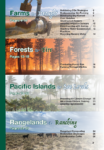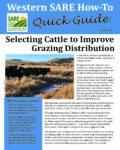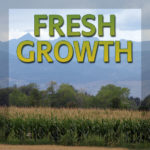The educational materials listed on this page are about Grazing Management.
Grazing management is critical to any pasture-based livestock farming system. Rotational grazing, intensive rotational grazing and management intensive grazing are key to successful and sustainable rotational grazing systems. So, what is rotational grazing? Careful grazing strategies include stocking rates of cattle, time spent on each paddock or pasture, how many times a herd revisits that same paddock or pasture throughout the year, and incorporating multi-species grazing to reduce parasite loads. Management approaches used to increase grazing uniformity, such as water sources and fencing, improve livestock grazing distribution problems. Rotational grazing cattle may also require capital expenditures. Thus, less expensive, practical solutions, like selecting cattle with desirable grazing patterns and culling cattle without, have been suggested as tools for improving managed intensive rotational grazing. This makes a rotational grazing definition difficult to refine depending on geographic location. Key practices include holistic management, grazing management, rotational grazing, livestock breeding, stocking rate, rangeland pasture management, pasture renovation, watering systems, multi-species grazing, continuous grazing.
The Rangeland Management Strategies bulletin has information for multi-species grazing and winter grazing, and it offers advice for forage management and vegetation management, as well as practices for protecting riparian areas. SARE’s Small Ruminant Toolbox offers producers with small ruminant livestock enterprises practices that provide pest, weed and parasite control. Smart Water Use on your Farm or Ranch can be used to better understand the role of water in a farm system and in grazing management.
Showing 1-3 of 3 results

Adapting to a Changing Climate
Western SARE has released our 28-page publication, Adapting to a Changing Climate: How Western SARE is Meeting the Needs of a Warming West.

WSARE Quick Guide: Selecting Cattle to Improve Grazing Distribution
Quick guide summarizing what you can do to select cattle to improve grazing distribution.

Fresh Growth Podcast
Fresh Growth: Approaches to a More Sustainable Future from Western Ag Practitioners introduces you to farmers and ranchers from around the western United States who are finding innovative sustainable practices that enrich the natural resources we all care about. These successful multi-generational operations experiment with new ideas and are making it pay. Listen in as […]